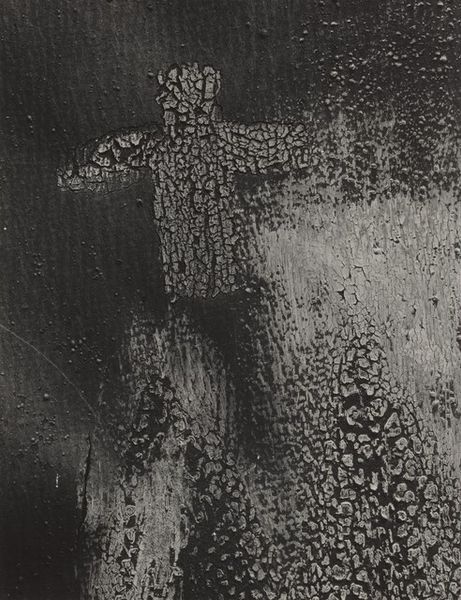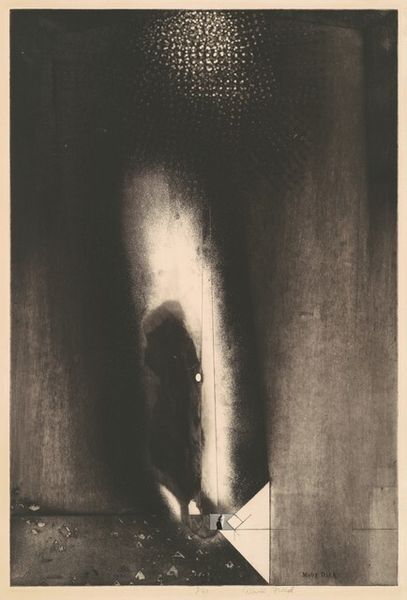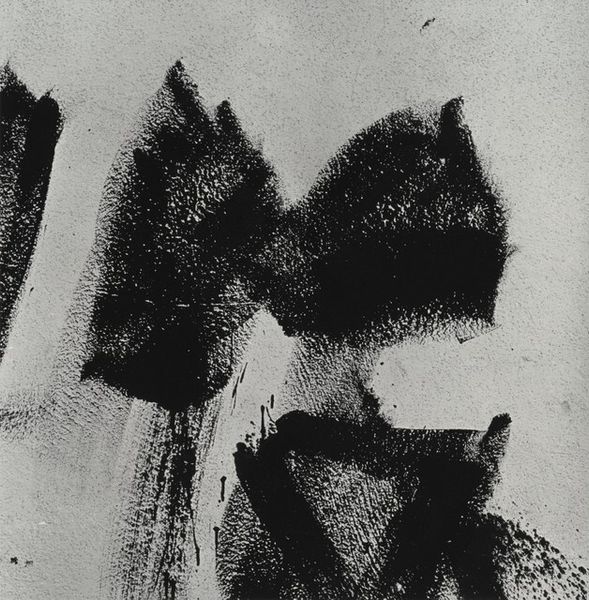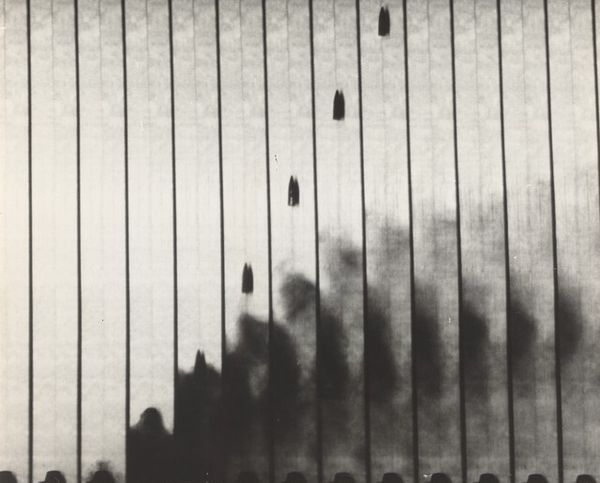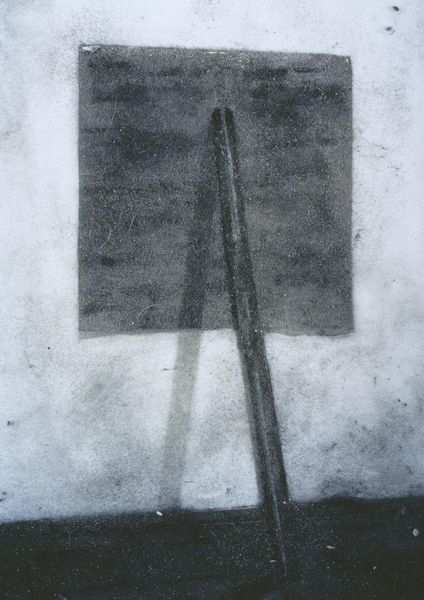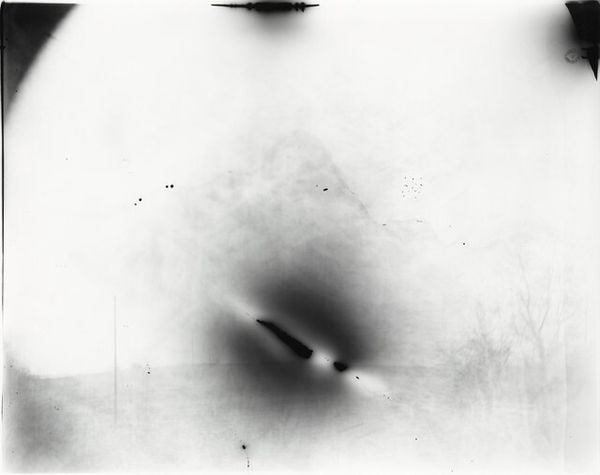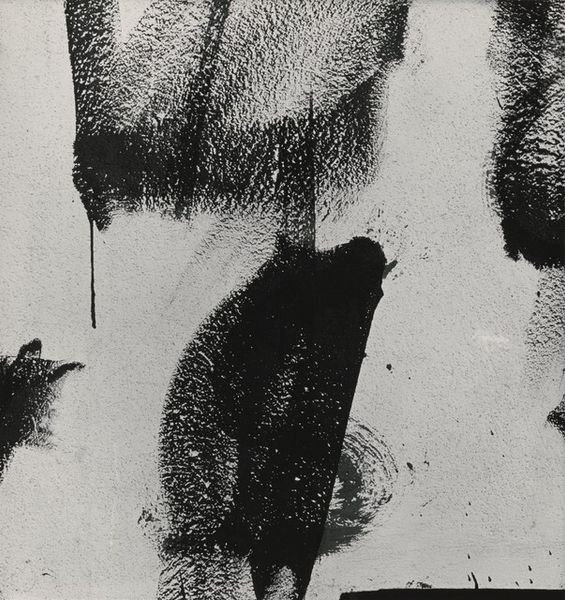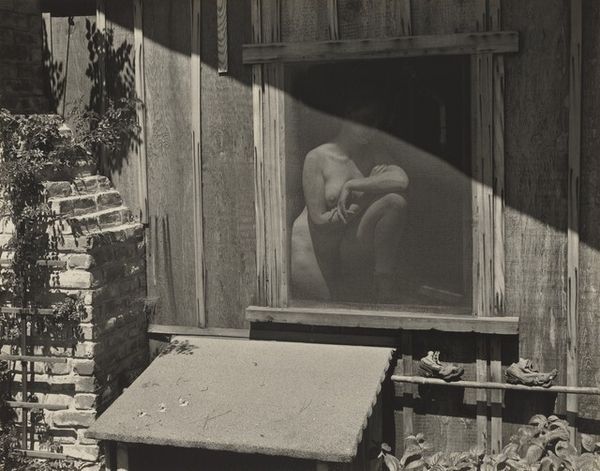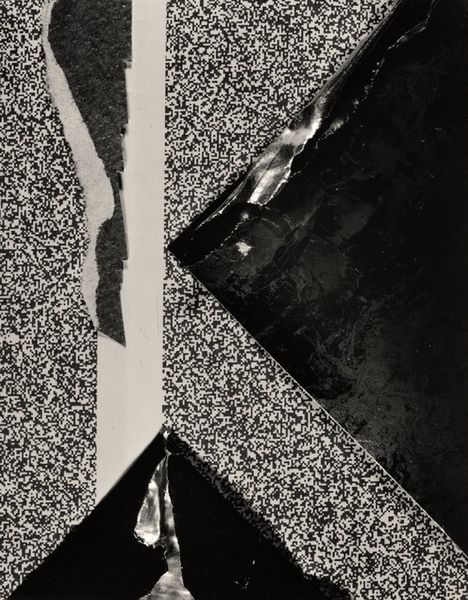
U.S.S. Akron Disaster, Camp Kearney, near San Diego, California 11 - 1932
0:00
0:00
photography, photomontage, gelatin-silver-print
#
landscape
#
photography
#
photomontage
#
gelatin-silver-print
#
history-painting
Dimensions: image: 34.9 × 43.4 cm (13 3/4 × 17 1/16 in.)
Copyright: National Gallery of Art: CC0 1.0
Curator: Today we are looking at "U.S.S. Akron Disaster, Camp Kearney, near San Diego, California," a photomontage dated November 1932. The work is anonymous, and it employs the gelatin-silver print technique. Editor: What strikes me immediately is the sense of foreboding. The stark contrast of light and shadow really amplifies a mood of impending doom. It feels like the weight of history itself is pressing down. Curator: Indeed. The image portrays the shadow of the U.S.S. Macon airship looming over what appears to be Camp Kearney, several cars parked beside a dirt road, all captured with remarkable tonal range for the medium. Airships represented human ingenuity and progress at that time. Editor: But that's precisely why this resonates so powerfully. There’s a palpable tension between progress and tragedy. We know what’s coming – the airship's shadow becomes an allegory for technological overreach and its consequences, mirroring the human cost masked by a sense of great industrial feats. Curator: That contrast is definitely present. One sees the geometric form of the shadow cast onto what appears to be bare and desolate earth. Its imposing and somewhat ominous silhouette stands as a powerful symbol that speaks beyond the physical depiction of an event. This visual representation of air and earth becomes a symbolic arena. Editor: And the lack of human figures really drives home the absence caused by this disaster. This anonymous composition seems acutely aware of the socio-political context, speaking to the pervasive impact of unexpected calamity on communities. The historical backdrop infuses the image with layers of meaning—it's not just a depiction of a place, but of loss and remembrance. Curator: Very insightful. It certainly makes one contemplate the visual narratives that images hold, especially those tied to moments of both technological achievement and unexpected tragedy. These moments often resonate with deeper psychological impact over time. Editor: I think this piece shows how photographs can do much more than document reality. By framing this moment, and choosing to emphasize shadow and desolation, this image subtly critiques power and serves as a visual memorial. Curator: A fitting thought. This particular photograph truly does transcend being a mere record, inviting contemplation about progress, disaster, and memory. Editor: It is, and on reflection it brings attention to the relationship between visibility and invisibility in remembering tragic events.
Comments
No comments
Be the first to comment and join the conversation on the ultimate creative platform.
